The Nupi Lan (Women’s Wars) of 1904 and 1939 led by women against the British Army are memorialised by Mothers’ Market. The proactive role played by women left its indelible mark on Manipur society, says Dr. Roopali. An exclusive for Different Truths.
Manipur is one of India’s most beautiful states. Situated in the northeastern part of the country, it boasts a bounty of natural resources. Blended with its 2500-year-old culture and history, this makes visiting Manipur a rich, vibrant experience.
New Year’s Day in 2020 found the military spouse and me in Imphal, the capital city of Manipur. The Brigade he commanded in Kashmir was now situated in Manipur. There were celebrations afoot.
The two hours and forty-five minutes flight from Delhi to Imphal was long for me. The drive from the airport to the military area was even further. Luckily, I was able to focus on the lushness of the area as we drove through and past such greenery!
My first encounter with the heritage of Manipur was as a child. At a college program in Srinagar, Kashmir I had seen a Manipuri dance performance. I had accompanied my parents. The colourful costume and the slow puppet like movement fascinated me. It still does. Sadly, we don’t get to seeing much of this dance form now. It was very popular once upon a time.
Imphal derives its name from ‘Yumphal’, which means ‘land of many villages.’ Hills, valleys, forests and several rivers called Iril, Sekmai, Thoubal and Khuga make up Manipur’s landscape. Manipur’s Sagol Kangjei is said to be the mother of the game of polo. I remember reading that the Imphal Polo Ground is the oldest polo ground in the world.
Women play an important role in the composition of Manipuri society and family structure.
Thang Ta, “the art of the sword and spear” is Manipur’s traditional martial art. It integrates various weapons – with the internal practice of physical control through soft movements coordinated with the rhythms of breathing. It is part of the great heroic tradition of Manipur.
I had earlier visited other parts of northeastern India. Kohima in Nagaland, Shillong and Cherrapunji in Meghalaya and Guwahati in Assam. But this was my first time in Manipur. These beautiful parts of India, largely left behind the process of development.
Women play an important role in the composition of Manipuri society and family structure. This became obvious when we visited the women’s market in Imphal. It is called Ima Keithel. Mother’s Market. It is a 500-year-old women’s market now housed in super massive buildings with open halls supported on pillars and raised platforms.
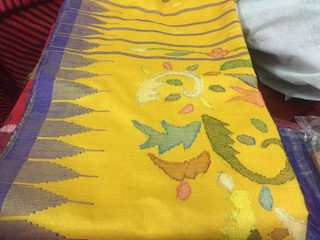
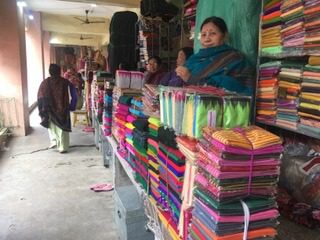
The Nupi Lan (Women’s Wars) of 1904 and 1939 led by women against the British Army are memorialised by Mothers’ Market. This reminds me of the Ibo Women’s War in Nigeria (1929) a protest movement against colonial laws, which deprived women of their productive status in the community. The British recorded the peaceful rally as a riot. The proactive role played by women in the Nupi Lan movement left an indelible mark on Manipur society. It became a unique and memorable symbol of gender equality and women’s empowerment. This market also symbolises just that.
It is a pleasure to shop here. This is Asia’s largest women’s market. It is split into two sections on either side of the road. Vegetables, fruits, fish, and household groceries are sold on one side and exquisite handlooms and household tools on the other. Not far away is a street where you can find beautiful wicker work and basketry.
Men are traditionally forbidden to trade here.
Men are traditionally forbidden to trade here. They can help as coolies to fetch heavy baggage to the market. But the stalls are exclusive in their wares. Mixing and matching of wares is not allowed. This is truly a fascinating place. Here we get to seeing India’s women as producers and actors. Not as the stereotyped consumer or ghar ki rani (the queen of the home) that we are conditioned to imagine.
Manipur’s women of the Metei community took over economic activity when the men were sent faraway on forced labour by British colonialists.
Post independent India revived the market completely. In fact, it became the hub for information exchange and socio-political discussions, thus witnessing a great influx of people from far and wide. The women traders in the market stay up-to-date with current affairs and the latest happenings in the state. They actively discuss socio-political issues.
Rallys and protests and local activism are a heritage. A few decades ago, the Ima carried out a successful historic campaign against liquor hubs. As evening fell groups of women would attack liquor breweries and beat up the clients who most often were their own sons and spouses.
Nearly 50,000 women vendors run the marketplace. Male vendors were banned by the government in 2018. Manipur is one of the few states in India that culturally looks at women as bread earners. That explains the relatively higher participation of Manipuri women in the labour force, compared to other states. A powerful body – the women’s union – manages the market. Only married women are allowed to trade and run the stands here. This tradition is passed on from one generation to another.
As the sun goes down, women pack up their stuff and head back home.
Also, there is a credit system run by the union. Women traders can borrow the money from the union for the purchase of goods and pay them back later. This system helps the smooth functioning of the market. Unique and colourful, it is a one stop place for all home products. Grocery and fresh fish as well as sun dried fish, organic vegetables and cooked delicacies are fill the shops. Women sit in a row selling a wide variety of items, ranging from authentic food items, local produce, and groceries, to clothes, utensils, handicrafts, toys, bamboo products and traditional textiles. As the sun goes down, women pack up their stuff and head back home.
I found the women friendly, but they discouraged bargaining. All fixed prices. They even scolded the soldier escort who was from Manipur for trying to help me with bargaining.
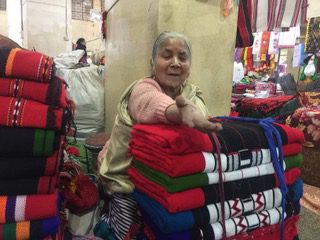
Ima Keithel plays a vital role in the lives of Manipuri women. In fact, it is often called the “Queen of Markets.” This is the workplace for these women. It is not a place for chit chatting. Although the market’s contribution to the state’s grass roots economy is tremendous it still faces challenges. However, nothing seems to deter the spirit and liveliness of this culturally and historically significant market.
Vibrant and beautiful these fabrics represent for me the warp and the weft of the diversity of this land of mine.
I bought quite a few phanek (sarong) and innaphi (shawl). Traditional Manipuri women’s attire. Hand crafted, of course! Women tailors strategically located within the market quickly stitched up the sarong for a small price.
Today this apparel is among my prized possessions. Vibrant and beautiful these fabrics represent for me the warp and the weft of the diversity of this land of mine. Gratitude overwhelms me as the warmth of the Manipuri shawl protects me from the shivering North
Indian winter chill.
Wrapped in the traditional striped sarong I am in touch with my sisters in faraway Manipur and the unique Ima Keithel. I consider myself one among them as I join these empowered women of India.
Pictures sourced by the author





 By
By

 By
By
In your article I got to learn that Manipur housed the largest number of women in the world , such a wonderful experience indeed mam
We know so little about the NE states. This article on Manipur and especially the women is an eye-opener. The Mother’s Market sounds extraordinary.
Thanks to the author!